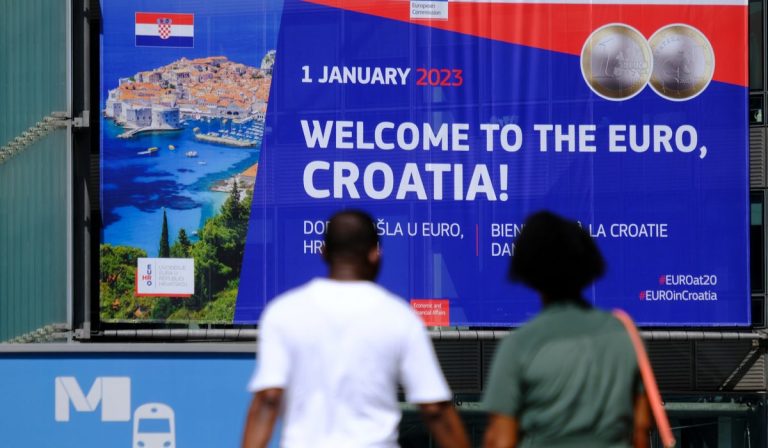
Earlier this week (July 12), the European Union Council officially approved Croatia’s entry into the eurozone, setting the stage for the euro currency to become legal tender in the country on Jan. 1, 2023.
The council’s announcement marked the final stage of the approval process that was initiated when the European Parliament overwhelmingly voted to accept Croatia’s entrance into the eurozone last month.
Read more: Croatia Gets EU Approval to Adopt Euro
But the Balkan country’s journey to become the 20th member of the monetary union has not been a straightforward one.
At the time of Croatia’s accession to the bloc in 2013, the European Central Bank (ECB) expected the country to join the European Exchange Rate Mechanism known as ERM-II by 2016, followed by full euro adoption in 2019.
In the end, ERM-II membership didn’t occur until mid-2019, at which point the Croatian kuna was fixed at a rate of 7.53450 kunas for each euro.
The reasons behind the delay are largely due to the time it took for the Croatian government to bring its legislation in line with EU requirements and the state of the country’s economy.
But despite those delays, and even before the kuna was fixed to the euro, Croatia had already experienced a process of euroization.
Its borders with eurozone countries Serbia and Montenegro, as well as a key tourism industry, has meant that for years many Croatian businesses have been used to accepting euros, and it is not uncommon for locals to hold and transact in the currency.
A Silver Lining for the Euro
In what hasn’t been a good month for the euro, Croatia’s entry into the eurozone is likely to be seen as a silver lining by political leaders in the union.
Ongoing tensions with Russia and a looming recession have been hurting the euro’s performance on foreign exchange markets, with the single currency sliding against the dollar this week to a 20-year low of $0.9998.
Related: Banks Watch Nervously From Sidelines as 9.1% Inflation Crushes Consumers
Against the backdrop of a growing interest difference with the dollar, the ECB announced this month that it would be raising its interest rate from -0.5% to -0.25%.
However, with EU consumers taking the brunt of some of the worst inflation the region has experienced in years, the ECB’s eight-year experiment with negative interest rates may soon be coming to an end, as authorities look to strengthen the euro and lower the cost of imports.
But according to European Commission Vice President Valdis Dombrovskis, it’s not all doom and gloom. At a ceremony celebrating the final confirmation of Croatia’s eurozone membership, Dombrovskis told reporters that the euro remained an “attractive, resilient and successful global currency” and a symbol of strength and unity.
“This is particularly important at such a challenging time when Russia’s aggression against Ukraine continues to send shock waves around the world,” he added.
The news could indeed serve as a symbol of strength and unity, possibly leading to further political integration between Croatia and its EU neighbors. As things stand today, the country is yet to join the Schengen area, but Croatian President Zoran Milanović has gone on record to express interest in making that a reality.
For all PYMNTS EMEA coverage, subscribe to the daily EMEA Newsletter.